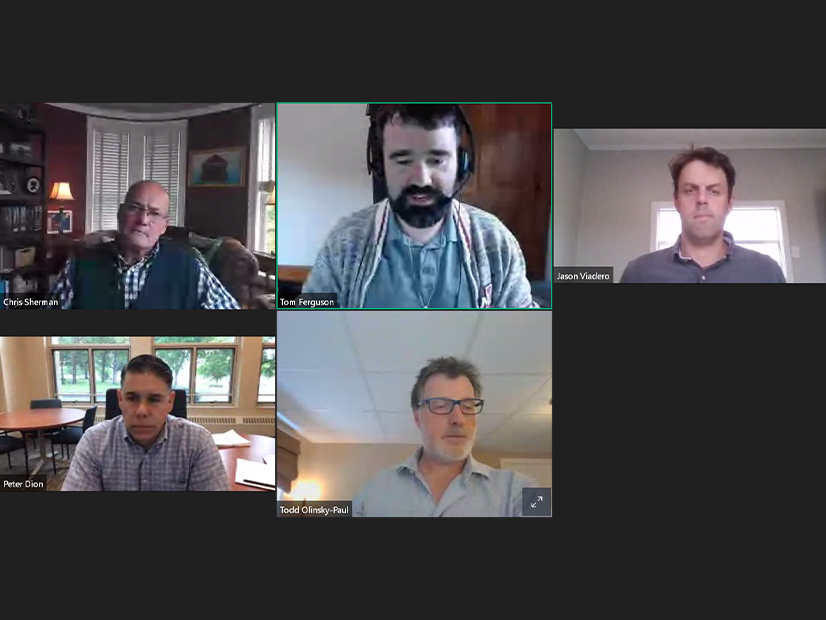
Battery storage remains largely reliant on state programs and subsidies to be viable in Massachusetts but increasingly could stand on its own as renewable resources proliferate, a panel of energy storage experts said during a webinar May 30.
“As we further decarbonize our grid, these products become ever more important,” said Tom Ferguson, energy storage programs manager at the Massachusetts Executive Office of Energy and Environmental Affairs.
Ferguson noted that battery storage’s ability to balance the grid will become more valuable with more intermittent resources on the system. He emphasized that long-duration storage pairs particularly well with offshore wind, which could help drive the business case for long-duration technologies.
While credits associated with Massachusetts’ Clean Peak Energy Standard (CPS) make up a major portion of the revenue for new storage resources today, “over time, the hope is that the need for incentives will decrease,” Ferguson said.
He cited a December 2023 report commissioned by the state that found storage likely will be “a cost-effective element of mid- and long-term resource portfolios” but needs increased state support in the near term to scale up quickly enough to meet the state’s goals.
“Additional state programs will be required, as will dedicated efforts to reduce existing financial, technological, supply chain and operational barriers to deployment,” the report found.
Responding to a question about Massachusetts’ progress toward its goal of deploying 1,000 MW of storage by the end of 2025, Ferguson said the state currently has “a little over 500 MW. … We’re hoping we’ll hit that target.”
Chris Sherman, senior vice president at Cogentrix Energy, discussed the company’s ongoing efforts to replace the West Springfield Station, which retired in 2022, with battery storage.
The first phase of the project consists of a 45-MW battery facility with a projected in-service date of mid-2025, while the company is “in the process of designing Phase 2, which will likely be an additional 105 MW,” Sherman said.
“The clean peak standard is the basis for the project,” Sherman said, noting that it accounts for about 40% of the project’s projected revenue.
Looming changes to how ISO-NE accredits resources in its Forward Capacity Market likely will further reduce the revenues available to battery storage from the wholesale markets, Sherman added.
An ISO-NE analysis from early May indicated the in-development accreditation changes could result in a $58 million reduction in total capacity market revenues for storage resources. (See ISO-NE: RCA Changes to Increase Capacity Market Revenues by 11%.)
The changes are intended to better align capacity procurements with actual reliability benefits. Sherman said they amount to “a fairly significant derate,” adding that “we would need to have that [capacity market revenue] made up somewhere … [but] it was probably the least amount of our revenue; it was never a great revenue source.”
Todd Olinsky-Paul, senior project director at the Clean Energy States Alliance, said the new accreditation framework likely will “push battery storage toward longer-duration resources.”
Jason Viadero, director of engineering and generation assets at Massachusetts Municipal Wholesale Electric Co. (MMWEC), said the company has deployed storage to minimize its peak and save customers money without substantial support from state programs. Massachusetts’ municipal utilities are not subject to the CPS.
“This is one specific use case that completely stands on its own economically,” Viadero said. “These systems are able to pay for themselves throughout the life of the system.”
Growing electricity demand will make peak shaving increasingly important, Viadero said, highlighting the significant differences in ISO-NE’s cost projections for a 57-GW peak load system and 51 GW. (See ISO-NE Prices Transmission Upgrades Needed by 2050: up to $26B.)
Viadero said MMWEC is working to deploy “upwards of 50 MW” of energy storage in 2024 and 2025, with a greater focus on longer-duration storage going forward.


